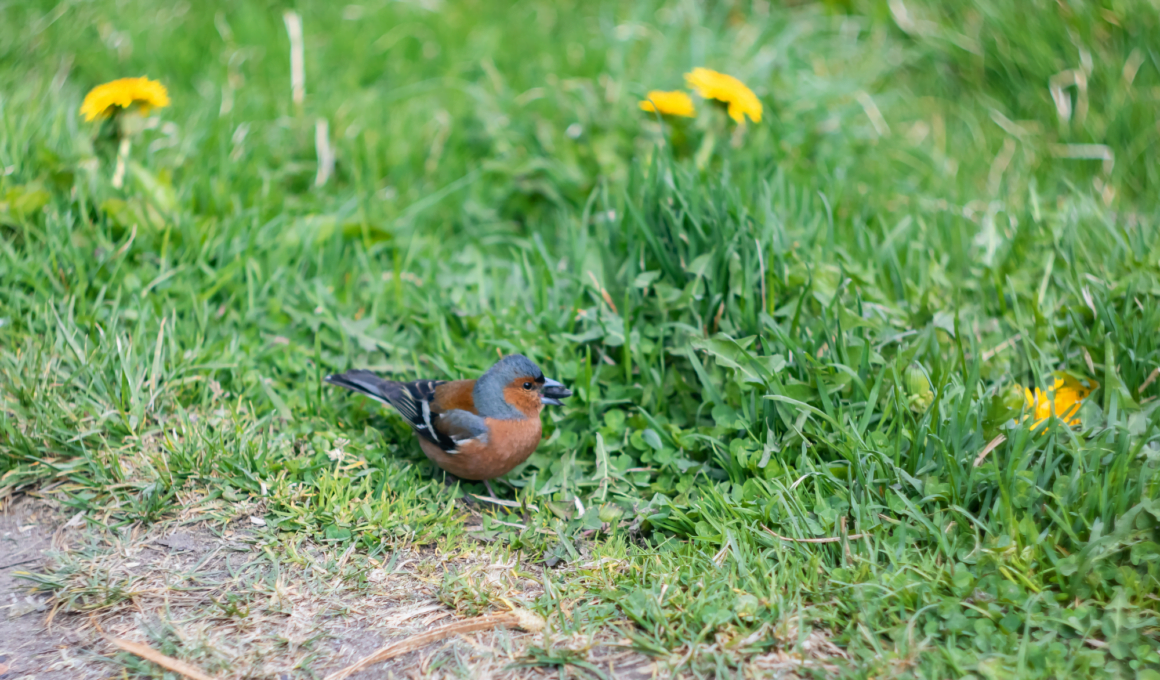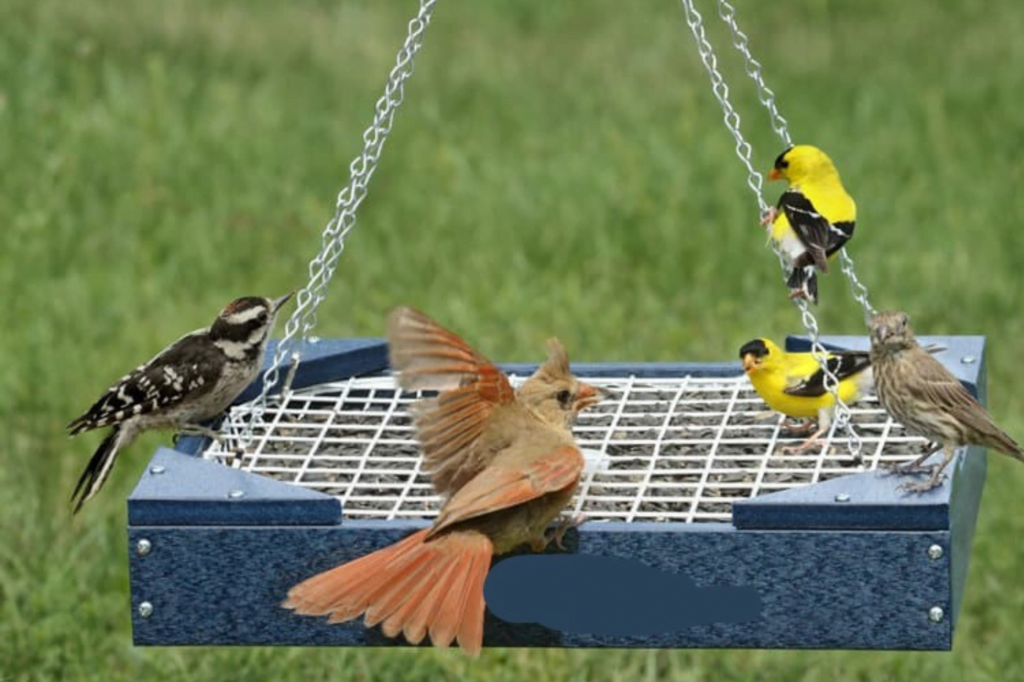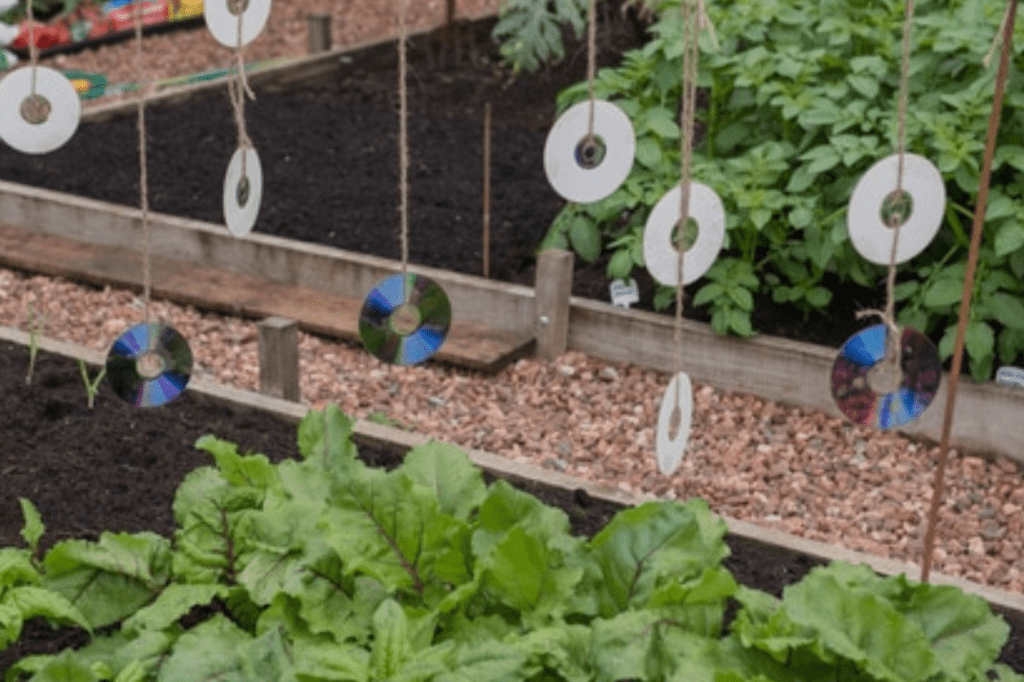Are you tired of birds feasting on your freshly planted grass seed? Protecting your grass seed from these winged pests is essential to ensure a beautiful and thriving lawn. In this article, we will provide you with effective strategies to safeguard your grass seed from birds.
By understanding bird behavior and habits, you can take proactive measures to deter them from your lawn. Choosing the right grass seed variety can also make a significant difference in attracting birds or repelling them.
You can create physical barriers, such as netting or fencing, to prevent birds from accessing the seed. Visual deterrents, like scarecrows or reflective objects, can also be highly effective. Additionally, noise deterrents and natural repellents can discourage birds from approaching your lawn.
Timing your seed planting and regularly maintaining and monitoring your lawn are also crucial steps in protecting your grass seed. With these strategies, you can successfully safeguard your grass seed and enjoy a lush, bird-free lawn.
Quick Summary
- Understanding bird behavior and habits is crucial for effective protection.
- Choosing the right grass seed variety can deter birds.
- Physical barriers like netting or fencing can prevent birds from accessing the seed.
- Visual deterrents like scarecrows or reflective objects can be effective.
Understand Bird Behavior and Habits
Birds are incredibly intelligent creatures, and understanding their behavior and habits is crucial to effectively protecting your grass seed from their prying beaks.
One important aspect to consider is bird feeding patterns. Birds have specific times and locations where they search for food, and knowing these patterns can help you plan your grass seed protection strategy. For example, birds are most active in the early morning and late afternoon, so it’s best to cover your grass seed during these times.
Additionally, birds tend to migrate during certain seasons, and this can impact their feeding habits. Before migration, birds often consume more food to prepare for the long journey, so be extra vigilant during these times.
Another important factor to consider is the type of birds in your area. Different bird species have different feeding preferences, so it’s important to research the birds in your region and tailor your protection methods accordingly.
By understanding bird behavior and habits, you can effectively protect your grass seed from their hungry beaks and ensure a lush and healthy lawn.
Choose the Right Grass Seed Variety
When selecting the appropriate grass seed variety for your lawn, you’ll want to make sure it suits your needs and captures the essence of your dream outdoor space.
To ensure the safety of your seed germination process and protect it from birds, it’s important to choose the right grass seed variety. Here are some tips to help you make the best choice:
- Opt for a seed variety with a thick and dense growth habit. This will make it harder for birds to access the seeds and prevent them from feeding on them.
- Look for a seed variety that has a quick germination rate. This means the seeds will sprout and establish themselves before birds have a chance to feast on them.
- Consider selecting a grass seed variety that has a natural deterrent to birds, such as a bitter taste or an unpleasant scent. This will discourage them from eating the seeds and help protect your lawn.
- If you live in an area with a high population of birds, choose a grass seed variety that is specifically designed to be bird-resistant. These varieties have been genetically modified to deter birds and ensure the best chances of seed germination.
By selecting the right grass seed variety, you can ensure the safety of your seed germination process and protect your lawn from bird feeding habits.
Create Physical Barriers
To ensure the safety of your lawn from unwanted intruders, you must take action by creating physical barriers. One effective way to protect your grass seed from birds is by using temporary fencing. This will create a physical barrier that prevents birds from accessing the area where you’ve sown the seed.
Choose a durable and lightweight fencing material that’s easy to install and remove. Make sure the fence is tall enough to discourage birds from flying over it and reaching the seed.
Another option is to install netting over the seeded area. Netting acts as a barrier, preventing birds from reaching the grass seed. When installing the netting, make sure it’s securely attached to the ground to prevent birds from slipping underneath. Be cautious when using netting to avoid trapping other wildlife or causing harm to birds.
Both temporary fencing and netting installation are effective methods to protect your grass seed from birds. By creating physical barriers, you can ensure the safety of your lawn and promote successful seed germination. Remember to regularly check and maintain the barriers to ensure their effectiveness throughout the seed germination period.
Use Visual Deterrents
Enhance your lawn’s defense by employing visual deterrents that’ll keep unwanted guests at bay.
When it comes to protecting your grass seed from birds, using visual deterrents can be highly effective. These deterrents work by creating a visual distraction that discourages birds from landing and feeding in your lawn.
Here are five visual deterrents that you can use to safeguard your grass seed:
- Reflective tape: Hang strips of shiny, reflective tape around your lawn. The movement and reflection of light will deter birds from approaching.
- Decoys: Place fake predators, such as owls or hawks, in your yard. Birds will perceive them as a threat and avoid the area.
- Scare balloons: Inflate balloons and draw large eyes or predator faces on them. The sight of these balloons floating in the wind will intimidate birds.
- Pinwheels: Install pinwheels in the ground. The spinning motion and bright colors will startle birds and prevent them from landing.
- Bird repellent gel: Apply a non-toxic bird repellent gel on surfaces where birds may roost. The sticky texture will discourage them from landing.
By incorporating these visual deterrents into your lawn, you can effectively deter birds from landing and feeding on your grass seed. Remember, prevention’s key when it comes to protecting your lawn, so take action early to avoid attracting birds and ensure the safety of your grass seed.
Try Noise Deterrents
One effective way to keep unwanted guests out of your lawn is by trying noise deterrents. Birds can be deterred by loud noises that startle them and make them uncomfortable. This is a safe and humane method to protect your grass seed from birds. There are various bird control methods that use noise to deter birds from your lawn.
One alternative grass seed protection method is using bird scare devices. These devices emit loud noises that mimic natural bird distress calls or predator sounds. The sudden and unexpected noise will startle the birds and make them think there is a threat nearby, causing them to fly away. Some bird scare devices also have flashing lights or motion sensors to enhance their effectiveness.
Another noise deterrent option is using wind chimes or bells. The gentle sound created by these objects can help to deter birds from landing on your lawn. The constant noise and movement can make them feel unsafe and discourage them from staying in the area.
You can also consider using ultrasonic bird repellents. These devices emit high-frequency sounds that are inaudible to humans but irritating to birds. The sound will create a discomforting environment for the birds, making them want to avoid your lawn.
Overall, noise deterrents can be an effective way to protect your grass seed from birds. By using bird scare devices, wind chimes, or ultrasonic repellents, you can create an environment that birds find unpleasant and encourage them to seek a different location for their activities.
Use Natural Repellents
Create a pleasant environment in your lawn by using natural repellents that’ll keep unwanted guests away.
When it comes to protecting your grass seed from birds, eco-friendly alternatives are the way to go. Not only will these natural repellents keep the birds at bay, but they’re also safe for the environment and won’t harm the birds themselves.
One option for a natural repellent is to use bird-friendly landscaping. By planting trees, shrubs, and flowers that birds don’t like, you can create a less inviting environment for them. Birds are attracted to areas with lots of open space and places to perch, so by planting dense vegetation, you can discourage them from coming near your grass seed.
Another option is to use natural scents that birds find unpleasant. Citrus peels, garlic, and chili peppers are all known to repel birds. You can scatter these items around your lawn or create a spray by mixing them with water. The strong smells will deter birds from landing and pecking at your grass seed.
Incorporating these eco-friendly alternatives into your lawn care routine will help protect your grass seed from birds while also ensuring the safety and well-being of the birds themselves. By creating a less inviting environment and using natural repellents, you can enjoy a beautiful lawn without worrying about unwanted feathered visitors.
Time Your Seed Planting
Make sure you’re planting your grass seed at the right time to maximize growth and success. Timing is crucial when it comes to protecting your grass seed from birds.
The best planting season for grass seed varies depending on your location, but generally, it’s recommended to plant in the early spring or fall. During these seasons, the weather conditions are favorable for germination, and the chances of bird interference are lower.
To ensure the best results, consider the germination time of your specific grass seed. Different types of grass have varying germination periods, which can range from a few days to a couple of weeks. It’s important to be patient during this stage and protect the seed from birds throughout the entire germination process. Birds are naturally attracted to freshly planted grass seed, as it provides a convenient food source for them.
To prevent bird damage during germination, you can use protective measures such as using bird netting or installing scare devices like reflective tape or scarecrows. These deterrents will help keep birds away from your newly planted seed, giving it the time it needs to establish strong roots and grow into a lush, beautiful lawn.
Remember, timing is everything when it comes to protecting your grass seed from birds, so plan accordingly and enjoy a successful planting season.
Regularly Maintain and Monitor Your Lawn
Keeping up with regular maintenance and monitoring of your lawn is key to ensuring its health and vitality. When it comes to protecting your grass seed from pesky birds, there are a few important steps you can take.
First and foremost, proper soil preparation is crucial. Make sure to loosen the top layer of soil and remove any debris or rocks that may interfere with the seed’s growth. This will create a smooth surface for the seed to settle into and reduce the risk of birds pecking at it.
In addition to soil preparation, proper watering techniques are essential for protecting your grass seed from birds. Watering your lawn regularly and deeply will encourage healthy root growth and make it more difficult for birds to remove the seed from the soil. Avoid overwatering, as this can lead to fungal diseases and attract insects that birds may be interested in.
Regularly monitoring your lawn is also important in keeping birds away from your grass seed. Keep an eye out for any signs of bird activity, such as disturbed soil or scattered seed. If you notice any areas where birds have been pecking, take immediate action to cover the seed with a light layer of straw or netting to deter them.
By following these tips and staying on top of your lawn maintenance, you can protect your grass seed from birds and ensure a lush and healthy lawn.
Frequently Asked Questions
Can I use fake owls or other decoys to scare away birds from my grass seed?
Yes, you can use fake owls or other decoys to scare away birds from your grass seed. However, keep in mind that their effectiveness may vary. Consider alternative bird deterrents such as reflective tape or netting for better protection.
What are some natural repellents that I can use to keep birds away from my lawn?
To keep birds away from your lawn, try using natural repellent options like hanging shiny objects, such as CDs or aluminum foil strips. You can also try alternative methods like using wind chimes or motion-activated sprinklers for added protection.
Is there a specific time of day that is best for planting grass seed to avoid bird interference?
To avoid bird interference, the best time to plant grass seed is early in the morning or late in the evening when birds are less active. This reduces the chances of birds disturbing the seeds and ensures their safety.
How often should I monitor my lawn to ensure birds are not damaging the grass seed?
To ensure birds aren’t damaging your grass seed, monitor your lawn daily for any signs of bird activity. Install bird deterrents like scarecrows, reflective tape, or netting to keep them away and protect your seed.
Are there any specific grass seed varieties that are less attractive to birds?
There are drought resistant and shady grass varieties that are less attractive to birds. These varieties can help protect your grass seed from bird damage, ensuring the safety and success of your lawn.
Conclusion
To protect your grass seed from birds, remember to understand their behavior and habits. Choose the right grass seed variety and create physical barriers like netting or fences. Use visual deterrents like scarecrows and shiny objects, and try noise deterrents like wind chimes or motion-activated devices. Natural repellents can also be effective, such as predator urine or citrus peels.
Time your seed planting properly and regularly maintain and monitor your lawn. By following these steps, you can ensure that your grass seed stays safe from pesky birds.











